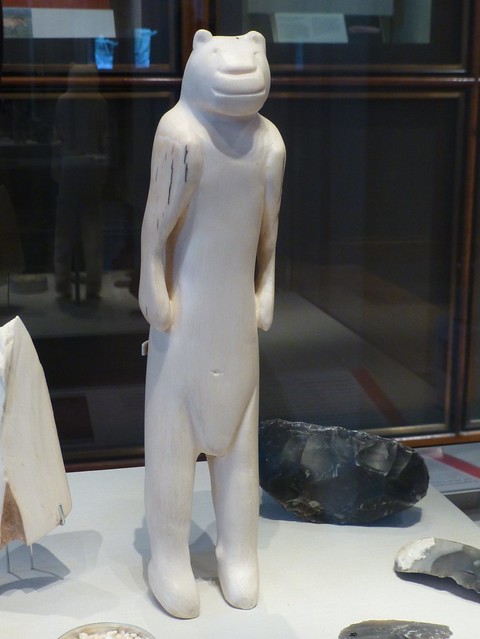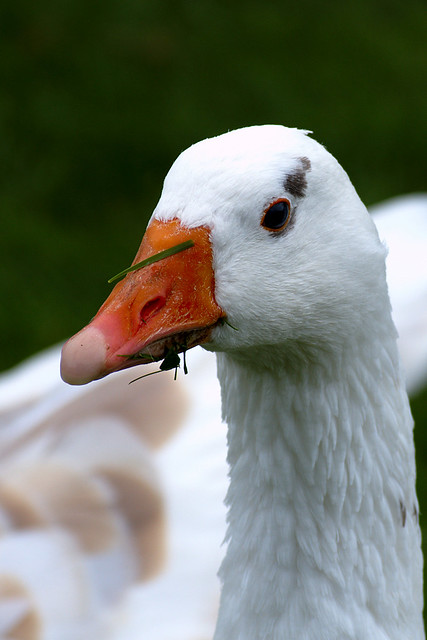Comets are an astronomical event/phenomenon that have exerted quite a hold on the imagination of people in the past & it’s only relatively recently that we have any understanding of what they are or why they happen. The In Our Time programme that discussed them primarily focused on the astronomy but did touch on the omens and portents side of them as well. The experts on the programme were Monica Grady (Open University), Paul Murdin (University of Cambridge) and Don Pollacco (University of Warwick).
They discussed what is known about comets and what the current theories are about where they come from etc. Comets were formed at the same time as the rest of the solar system – when the nebula that formed the sun and planets coalesced at a particular distance from the sun is what is known as the snow line, and beyond this small lumps of ice formed. These are the comets. Grady told us about the Oort cloud, which is a spherical region around the outside of the solar system where the comets orbit. When something perturbs this – gravitational changes due to the relative movements of our solar system & other parts of the galaxy, for instance – a comet might get jostled free and plunge in towards the sun. I specified that it was Grady that discussed the Oort cloud because one of the others (Pollacco, I think) was of the opinion that it wasn’t so much a sphere around the solar system, but more that this is how the spaces between the gravitational wells of different stars are filled (if that makes sense).
Once a comet is jostled free it still orbits the sun, but now the orbit is an eccentric one as compared to the planets. All the planets orbit in the same plane, in the same direction, in roughly circular orbits. But comets can be in any plane, and often move very close to the sun before returning to a much further out position. Comets are split into two classes – short-period and long-period. Murdin (I think it was) said that they’d like to be able to classify them by composition or something like that, but sadly we just don’t know enough about them to do that. So long-period comets take a long time to come back – this might be a few hundred years, or it might be forever. Some comets break up when they get close to the sun, due to the heat & gravitational pull. Some comets swing round the sun once and then go back to the Oort cloud (or whatever the true situation out there is). Short-period comets come back more often – Halley’s Comet is an example of this sort of comet.
They were saying that we only actually know the orbits & can predict 150 comets out of the many millions that there are. And Pollacco was crediting Halley’s prediction about his comet’s return as being one of the factors that helped to get the Enlightenment going. Basically he was saying that it was a very good demonstration of the power of science – Halley predicted the return of the comet despite this occurring after his death via scientific observations & mathematics, and then this prediction came true.
There is a little known about the composition of comets – due to space missions that have flown past comets and through their tails. One of those missions was named Stardust and it brought back some of the particles in a comet tail. They know that comets are lumps of ice, that are pretty small by cosmic standards – up to a few hundred kilometres across. They aren’t white like you expect when you say “ball of ice”, they’re black due to all the dust and rocky particles in them. Bragg asked what the difference was between an asteroid and a comet & the answer was partly the place you find them orbiting, and partly it’s a continuum where asteroids are icy bits of rock, but comets are rocky bits of ice. As a comet gets closer to the sun (inside the orbit of Mars) it develops a coma, which is gas that has sublimated out of the ice. A comet has two tails, both created by the effects of the sun. One of these tails is lots of bits of dust – melted out of the comet by the sun’s heat & left behind as the comet moves. The other tail is the coma being pushed back by the solar wind & radiation – this is the ion tail. The Stardust mission brought back bits of the first type of tail, and they found that these are little bits of rock much like rocks on earth – made up of silicon, plus some carbon, some nitrogen etc.
Bragg brought up Fred Hoyle’s theory that life on Earth was seeded from outer space by comets – discredited some time ago – and was slapped down by Grady (politely, but firmly). Hoyle was postulating that bacteria were present on comets and this is where life came from, but at best comets may’ve brought some of the water and minerals needed for life to the Earth.
While on the subject of how astronomy is a science where you might have things you want to know but you have to live with the things you can find out, they talked about the Shoemaker-Levy 9 impact on Jupiter. This comet was discovered in 1993, and it shortly afterwards became apparent that it had not just been captured by Jupiter’s gravity but was going to crash into Jupiter. In 1994 this happened – sadly not quite in full view of all the telescopes, but the aftermath was clearly visible. Despite the relatively small size of the comet the marks it left were spectacular – about 80% the size of Earth! The comet broke up into about 25 pieces, and these hit in turn generating a straight line of marks. As each piece hit it ploughed through the atmosphere leaving a hole behind itself, and once it had hit the lower region of the atmosphere spurted back up the hole leaving a dark mark on the surface of Jupiter. Having seen the pattern of marks astronomers looked at craters on other planets/moons, and could see other examples of a row of craters in a straight line – presumably also from being hit by comets or asteroids that fragmented before they hit.
Thinking about comets is one of those things that makes it clear just how fragile life is on this planet …

